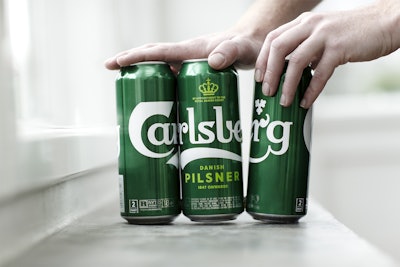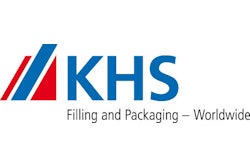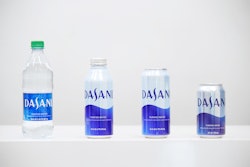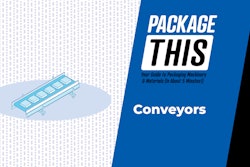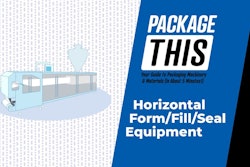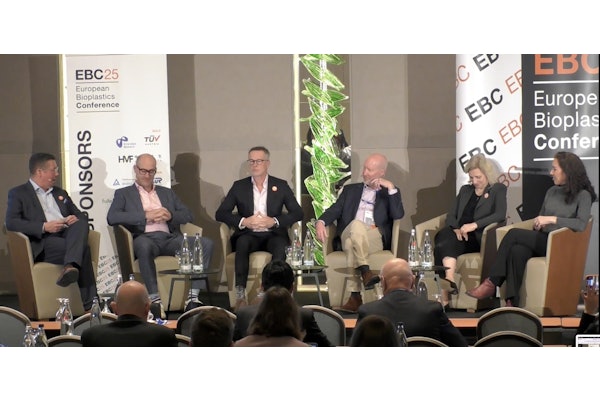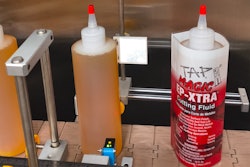It may surprise those who rail against packaging that data from the Climate Collaborative shows that on average packaging accounts for just 5% of the energy used in the life cycle of a food product. But for massive global Consumer Packaged Goods companies, 5% is still significant. Imagine, then, a 45% CO2 footprint. That was the situation facing leading Danish brewer Carlsberg Group in 2015, after it had completed a total value chain carbon mapping exercise of its products. That year, the brewer sold 36 billion bottles of beer, equaling more than 3 billion gallons. That’s a lot of packaging.
Explains Simon Boas Hoffmeyer, Director, Group Sustainability at Carlsberg Group, there are two main reasons packaging makes up such a high proportion of the company’s greenhouse gas emissions. “The first is that beer is a very low climate-impact product, which means the raw materials and the production of our beers are not as climate intensive as many other products,” he says. “The other main reason, in my opinion, is that when it comes to beer, food waste is almost non-existent compared to other foodstuff.”
In 2017, Carlsberg announced its Together Towards ZERO initiative in which it pledged to reduce its “beer-in-hand,” or Scope 3 emissions, 15% by 2022 and 30% by 2030. For Carlsberg, Scope 3 emissions include packaging, as well as refrigeration, waste and recycling systems, and logistics. As reported in its 2018 Sustainability Report, the company has made some progress, noting a 5% decrease. However, Hoffmeyer says some of this can be attributed to an improvement in Carlsberg’s protocols for calculating its emissions.
To reach its packaging reduction goals, Carlsberg embarked on radical innovation. In 2015, it announced its intention to bring to market a fiber bottle in cooperation with ecoXpac. Hoffmeyer says Carlsberg will be sharing news on this development soon.
The other notable innovation, launched last year, is the Snap Pack, a pioneering technology from KHS GmbH subsidiary NMP Systems that replaces the plastic wrap, plastic ring carriers, or other secondary packaging used for Carlsberg’s six-count can multipacks with adhesive dots that glue the cans together. The new multipacks were introduced in the U.K. and Norway in September 2018 and in Denmark in early 2019. Carlsberg estimates the Snap Pack will reduce the amount of plastic used by 50% to 76%, depending on the type of secondary it’s replacing.
Partnership enables innovation
In the leadup to the Together Towards ZERO pledge, Carlsberg began working with NMP in 2016 to customize NMP’s Nature MultiPack™ adhesive and adhesive application equipment for its needs. The technology was first used for Evian’s PET bottles, launched that same year, but the solution for Carlsberg was built from the ground up.
“There were some basic things that were the same,” explains Hoffmeyer, “but when you change the packaging, it needs to be a totally new setup, a totally different machine, and a totally different adhesive composition—basically you need to build everything from scratch.”
The Snap Pack project was initially co-owned by the company’s Development and Sustainability departments. Shares Hoffmeyer, “Our Development department works on innovations within packaging and within our beers. They looked at it as an amazing innovation. And of course, from my perspective as Sustainability Director, I saw it as an amazing opportunity for us to make our products even more sustainable and also offer the most sustainable option for our consumers in their everyday lives as to the amount of waste they generate at home.”
As the project progressed, more departments became involved, including branding, production, logistics, and quality. At NMP, the company’s engineers and developers worked hand-in-hand with Carlsberg. Without everyone’s involvement, Hoffmeyer explains, the project could not have been achieved at the scale Carlsberg is working toward. “It’s really a good example of the spirit of our sustainability program,” where partnerships are essential, he adds.
The first challenge was to select the right adhesive for the multipacks from among the 4,000 glue recipes generated for the project. The goal was to get an adhesive that was sticky enough to hold the cans securely during transportation, but not so sticky that consumers could not easily separate them. The teams studied the surface tension on the can and evaluated what types of inks and lacquer would work best with the adhesive without resulting in damage.
Carlsberg and NMP tested the 4,000 adhesives in Carlsberg’s Development Center in France. “That’s why it wasn’t something we could do overnight,” says Hoffmeyer. “We needed to look at every single link of our supply chain. We tested rigorously to ensure the solution would live up to our quality standards.”
One-of-a-kind system
In 2017, Carlsberg installed the NMP adhesive application equipment on a can packaging line in its Sierpc, Poland, facility. The machine is a one-of-a-kind system custom-developed for Carlsberg. As more machines are produced, Carlsberg plans to scale up distribution of the Snap Pack into new markets.
The current packaging line at Sierpc handles cans with a minimum diameter of 54 mm and a maximum height of 200 mm, running at 45,000 cans/hr. Downstream of the adhesive system, the line operates in the traditional manner. After filling, cans are conveyed to the NMP machine, where a camera captures the position of each can and sends the information to the controller. The cans are then oriented so that a billboard effect is created on the six-pack, with the Carlsberg logo presented across the three cans on each side. Once the cans are oriented, the machine applies adhesive dots to the can—the number of dots varies depending on the size of the can—after which the six cans are compressed together for several seconds so the adhesive can set up and solidify.
When the six cans are securely affixed together, a plastic carry handle is attached across the two middle cans. Hoffmeyer says Carlsberg is looking at alternative materials for the handle that could replace the polymer in the future. “But right now, that’s what we have to use because we need the handle to be strong to be able to withstand the weight of the cans,” he explains.
Carlsberg estimates that when the Snap Pack is rolled out into all the markets where it has a significant amount of volume in four-, six-, and eight-pack formats, it will reduce plastic waste by approximately 13,000 tons per year. At the same time, it will be decreasing its energy consumption, as the NMP packaging system also reduces the energy used during production by up to 67%.
Sustainability and consumer convenience
Given that the Snap Pack is a completely new format, Carlsberg has gone to great pains to educate consumers on the proper way to “unbundle” the six pack. “The first time you open the Snap Pack, if you do it in the wrong way, you might actually find it’s difficult to open,” says Hoffmeyer. “The right way to open it is not to tear a can off like you do with a shrink-wrapped six pack or with a plastic ring. You have to use a little bit more finesse.
“To open it, you first remove the carry handle, then you split the six pack into two three-packs, and then you roll off a can from the end. It’s something people will have to get used to.”
Opening instructions are printed on the carry handle and are being disseminated on all of Carlsberg’s social media channels in the markets where the Snap Pack is available. “We know the experience has to be really easy for consumers for them to have a good experience,” says Hoffmeyer.
Carlsberg also encourages consumers to recycle cans with the adhesive still attached. Through recycling tests, the brewer has confirmed that the adhesive has no negative effect on can recycling. In fact, Hoffmeyer says that by leaving the adhesive on the can, consumers can ensure the glue does not end up in the wrong places.
Since the Snap Pack was rolled out, consumer reception to the new format has been “amazing.” In fact, the launch of the package came at just the right time. “The agenda of avoiding waste has never been bigger,” Hoffmeyer says, “and that meant in general our consumers were ready to try something new and radically different.
“What’s really radical about the Snap Pack versus any other type of packaging I’ve seen is that it combines sustainability and consumer friendliness. Packaging is there for a reason: It helps us transport our products in a safe and good way. With the Snap Pack, we still enable people to have the benefit of an easy-to-carry four-pack, six-pack, or eight-pack, but with an absolute minimal amount of packaging.”
Watch an ad for Carlsberg’s Snap Pack here.
Other Innovations Brewing at Carlsberg
At the time of the Snap Pack announcement last fall, Carlsberg also unveiled several other packaging improvements designed to rein in the emissions from its packaging.
Among them:
· A switch to Cradle-to-Cradle Certified™ inks on its bottle labels to improve recyclability. The development was suggested by C2C co-creator professor Michael Braungart and was developed in partnership with ink supplier hubergroup. Said Julian Marsili, Carlsberg Brand Global Director, for Carlsberg Group, at the time the brewer announced the use of the inks, “Printing inks have major impacts on the recyclability of packaging because they are often recycled along with paper fibers. To improve the recyclability of Carlsberg labels in selected markets, we are using the hubergroup Eco-Offset Ink Premium Plus, which is Cradle-to-Cradle Certified at the Silver level.”
· The use of shrink wrap containing from 50% to 100% recycled polyethylene—with a minimum of 30% coming from Carlsberg’s own breweries—in markets where the Snap Pack is not available. Says Carlsberg, “With up to 60 percent lower CO2 impact than virgin shrink wrap, it creates more demand for recycling, closing the recycling loop.”
· A new coating for refillable glass bottles to extend their lifespan and therefore reduce their environmental footprint. According to Simon Boas Hoffmeyer, Director, Group Sustainability at Carlsberg Group, the first market in which these bottles are being used is Malaysia. The coating, applied to the outside of the bottles, reduces scuffing by 85%, enabling them to remain in circulation twice as long as a bottle without. In an optimal market, this could mean up to 50 turns. In less-than-optimized, it could be as few as seven. “But even when you use a bottle once or twice, it’s still better from an environmental perspective,” Hoffmeyer says.
Carlsberg’s Little Mermaid Snap Pack ‘Canstruction’
Last year, Carlsberg unveiled its own unique version of Copenhagen’s Little Mermaid statue, made entirely from its Snap Pack cans. Held together with glue, like the Snap Pack, the mermaid is three meters high and rests atop a rising tide of roughly 300 pounds of plastic—representative of the amount of material Carlsberg will be eliminating each hour through the use of the Snap Pack.
The Little Mermaid statue is not only a beloved icon of Copenhagen, but it also has a close association with Carlsberg. In 1913, the original statue was commissioned by Carl Jacobsen, son of the company’s founder, as a gift to the city.
